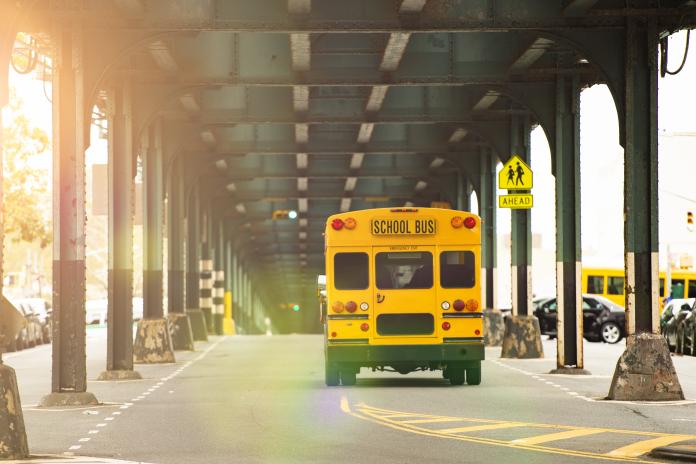Electrifying US School Bus Fleets Equitably to Reduce Air Pollution Exposure in Underserved Communities
Are older school buses contributing to transport pollution disparities?

The World Resources Institute's Electric School Bus Initiative and Equitable Cities investigate how the fuel type and age of school bus fleets may be affecting U.S. communities disproportionately exposed to air pollution. Researchers explore how a focus on equity has brought zero-emission electric school buses to the school districts most harmed by the oldest, most polluting diesel school buses.
This report is part of the Equity Framework in Action by World Resource Institute’s (WRI) Electric School Bus (ESB) Initiative. Its purpose is to provide an equity analysis of the geographic distribution of school buses, their fuel types, and their emissions control technology to understand which school districts and which populations are exposed to emissions from the oldest, most polluting school buses, and, conversely, what the socioeconomic characteristics are of the districts that have had early success procuring electric school buses. We seek to answer the following question: are older school buses contributing to the disproportionate burden of transport pollution exposure seen in disadvantaged communities?
To do this, the report provides new analysis of two recently published Electric School Bus Initiative datasets on ESB adoption and US school bus fleets, drawing on data from the EJScreen tool of the US Environmental Protection Agency, the US census, and the American Community Survey. It also provides analyses on emerging trends related to funding opportunities that influence the distribution of ESBs and could be leveraged to enhance equitable adoption.
Highlights:
- It is well established that ambient air pollution in the United States disproportionately impacts low-income communities and communities of color, but data about how the fuel type and age of school bus fleets may be affecting these inequities has only recently become publicly available.
- WRI’s Electric School Bus Initiative analyzed its recently published datasets on ESB adoption and school bus fleets to reveal where the most polluting buses and fleets are located, who is most affected, and which districts have had early success in procuring ESBs.
- This research finds that the most polluting buses in the US fleet—those that are older and lack modern emissions reduction technology—are disproportionately concentrated in school districts with higher shares of low-income households and residents of color.
- Rural school districts are more likely to have older buses, but they have smaller fleets overall.
- Encouragingly, as of December 2022, most ESB commitments tend to be in districts with lower incomes, more residents of color, and the worst air quality, partly due to federal and state programs that have prioritized support for disadvantaged districts.
- We recommend that state policymakers and agencies, school district officials, and other stakeholders use this analysis to target districts most in need and seize the opportunity of unprecedented federal and state funding to clean up their fleets and protect children.